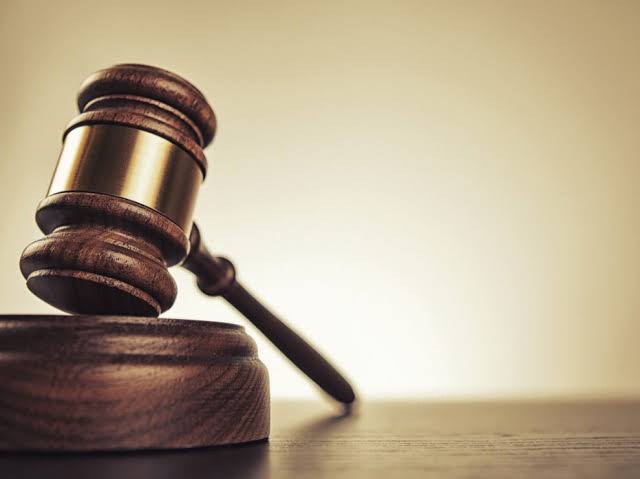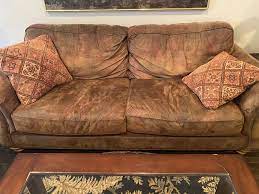Are you contemplating a home renovation, buying or selling a property, or simply curious about the size of a particular space? Understanding how to measure square footage accurately is an essential skill for any homeowner, real estate professional, or DIY enthusiast.
Whether you’re envisioning an open-concept kitchen, calculating the amount of flooring needed for a room, or assessing the market value of a property, knowing how to measure square footage correctly can make all the difference.
In this comprehensive guide, we will explore the various methods and tools available for measuring square footage with precision.
By delving into this fundamental aspect of spatial assessment, you’ll gain invaluable knowledge that can elevate your decision-making processes and empower you in your property-related endeavours.
Table of contents
What are the Importance of Accurate Square Footage Measurement?
Precise square footage measurement is essential for several reasons, such as:
Just Pricing and Appraisal:
Proper square footage is the foundation for figuring out a property’s worth. Inaccurate square footage representations might result in either an expensive listing or an underpriced sale. Precise measurements guarantee that purchasers and vendors are making knowledgeable choices based on the actual dimensions of the asset.
Rough Estimates:
Square footage is frequently used to calculate property taxes, insurance costs, and homeowner association dues. These evaluations will be erroneous if the square footage is not right, which could put a financial strain on homeowners.
Making Informed Decisions:
Accurate square footage is crucial for prospective buyers to evaluate if a property fits their needs and preferences. Buyers may make ill-informed decisions if the square footage is misrepresented, which could result in discontent or even legal challenges.
Transparency and Trust:
Accurate square footage promotes transparency in real estate dealings, strengthening ties of confidence between purchasers, vendors, and brokers. It encourages a more seamless and peaceful transaction procedure when both sides are comfortable with the measures.
Accordance with the Rules:
Accurate square footage disclosure in real estate listings is required by law in several countries. Sellers and real estate agents may face legal ramifications if they fail to disclose precise measurements.
Architectural and Design Plan Accuracy:
For the purpose of creating precise plans and specifications for additions, renovations, or new construction, architects, designers, and builders need to know the exact square footage. Errors and delays that cost money might result from mismeasurements.
Optimistic Use of Space:
By ensuring that storage options, furniture, and equipment are all the right size for the available space, accurate square footage assists both businesses and homes in making the most use of their available space.
Read Also: Three-Way Lights – How Three-Way Switches Work
Understanding the Basics of Square Footage Calculation
Understanding the basics of square footage calculation is essential for anyone involved in real estate transactions, whether you’re a homeowner, prospective buyer, or real estate agent.
Accurate square footage measurements are crucial for fair pricing, informed decision-making, and compliance with regulations.
Square Footage: A Two-Dimensional Measure
Square footage is a two-dimensional measure of area, typically expressed in square feet (sq ft). It represents the total usable floor space within a property. To calculate the square footage of a room or building, you need to measure the length and width of each enclosed space and multiply those values.
The Formula for Square Footage Calculation
The basic formula for calculating square footage is:
Square Footage = Length (ft) x Width (ft)
For instance, a room measuring 10 feet by 12 feet would have a square footage of 120 square feet (10 x 12 = 120). This formula applies to simple rectangular spaces. For more complex layouts, you’ll need to break down the area into smaller rectangles or squares and calculate the square footage of each section separately.
Measuring Irregular Shapes
When dealing with irregular shapes, such as bay windows, alcoves, or curved walls, you may need to divide the area into smaller, more manageable shapes and apply the square footage formula to each section. For instance, a bay window can be approximated as a triangle or trapezoid, and its square footage can be calculated using appropriate formulas for those shapes.
Excluding Unusable Spaces
Square footage typically refers to usable living space. Areas like staircases, open floor plans, or voids within a room should not be included in the total square footage calculation. These areas do not represent usable living space and should be excluded from the overall measurement.
Read Also: How to Make Homemade Dog Repellent
Ceiling Height Considerations
While square footage is a two-dimensional measure, it’s important to consider the height of the ceiling when calculating the total volume of a space. For instance, a room with a high ceiling may feel more spacious than a room with a lower ceiling, even if they have the same square footage.
Accuracy and Precision
When measuring square footage, accuracy and precision are paramount. Use measuring tapes or laser measuring devices with appropriate increments to ensure accurate measurements. Always measure from the interior wall surfaces, excluding baseboards and moldings, to maintain consistency.
Documentation and Recordkeeping
Maintain documentation of your square footage calculations, including sketches, measurements, and formulas used. This documentation can be useful for future reference or in case any discrepancies arise.
Consulting Professionals
For complex layouts or properties with unique architectural features, consider consulting with a professional appraiser or surveyor to ensure accurate square footage measurements. Their expertise and experience can provide peace of mind and protect your interests.
Read Also: How to Repair an Oven: Tips and Guidelines
Tools and Methods for Measuring Square Footage
Measuring square footage accurately is crucial for a variety of reasons, including property assessments, real estate transactions, and space utilization planning. Here are some essential tools and methods to effectively measure square footage:
Tools for Measuring Square Footage
- Measuring Tape: A traditional measuring tape is a versatile tool for measuring linear distances, making it suitable for measuring the length and width of rectangular rooms. Choose a measuring tape with clear markings and appropriate length increments for the space you’re measuring.
- Laser Measuring Device: Laser measuring devices offer precision and efficiency, particularly for larger spaces or areas with irregular shapes. They emit a laser beam that bounces off a target and returns to the device, calculating the distance with high accuracy.
- Planimeter: A planimeter is a specialized tool for measuring irregular areas on maps or plans. It traces the perimeter of the area on the plan and mechanically calculates the square footage.
- Smartphone Apps: Several smartphone apps can assist in measuring square footage using the device’s camera and augmented reality technology. These apps can be convenient for quick measurements, but their accuracy may vary depending on the app and the conditions of the space being measured.
Read Also: How To Get Gum From Shoes
Common Mistakes to Avoid When Measuring Square Footage
Accurate square footage measurement is crucial for fair property valuation, informed decision-making, and compliance with regulations. However, several common mistakes can lead to inaccurate measurements and potential disputes. Here are some common mistakes to avoid when measuring square footage:
- Ignoring Irregular Shapes: Square footage calculations often overlook irregular shapes like bay windows, alcoves, or curved walls. These areas should be approximated as combinations of simpler shapes and measured separately to ensure accurate inclusion in the total square footage.
- Measuring from Wall to Wall: Incorrectly measuring from the exterior wall surfaces, including baseboards and moldings, can lead to overstated square footage. Always measure from the interior wall surfaces to maintain consistency and avoid overestimation.
- Forgetting Ceilings and Floors: Square footage is a two-dimensional measure, but omitting the ceiling height can provide an incomplete picture of the space’s volume. Measure the ceiling height in at least one location to get an idea of the room’s vertical dimensions.
- Including Unusable Spaces: Staircases, open floor plans, or voids within a room should not be included in the total square footage calculation. These areas do not represent usable living space and should be excluded from the overall measurement.
- Double-Counting Areas: Overlapping or intersecting areas may be counted twice if not carefully considered. Ensure that each area is measured and counted only once to avoid overestimation of the total square footage.
- Misinterpreting Architectural Plans: When measuring square footage from architectural plans, carefully interpret the scale and markings to ensure accurate measurements. Consult with an experienced professional if necessary.
- Relying Solely on Previous Measurements: Refrain from relying solely on previous square footage measurements without verifying the accuracy. Buildings may undergo renovations or changes that affect the actual square footage.
- Failing to Document Measurements: Maintain clear documentation of your measurements, including sketches, dimensions, and formulas used. This documentation can be useful for future reference or in case any discrepancies arise.
- Underestimating the Importance of Accuracy: Small discrepancies in measurements can lead to significant differences in total square footage and, consequently, property value. Take the time to measure carefully and accurately.
- Avoiding Professional Assistance: For complex layouts, properties with unique architectural features, or situations where accuracy is critical, consider consulting a professional appraiser or surveyor. Their expertise and experience can provide peace of mind and protect your interests.
Read ALSO: How to Clean Bathtub Jets
Tips for Measuring Difficult Spaces
Measuring square footage accurately can be challenging, especially for spaces with irregular shapes, obstructions, or complex layouts. Here are some tips to help you effectively measure difficult spaces:
- Sketch the Layout: Create a rough sketch of the space, noting any irregular shapes, obstacles, or unique features. This will help you visualize the area and plan your measuring strategy.
- Divide into Smaller Sections: Break down large or complex areas into smaller, more manageable sections. This will make the measurement process less overwhelming and more precise.
- Utilize Laser Measuring Devices: For hard-to-reach areas or irregular shapes, laser measuring devices offer precision and efficiency. They can provide accurate measurements without the need for physical contact with the area being measured.
- Approximate Irregular Shapes: Approximate irregular shapes like bay windows, alcoves, or curved walls as combinations of simpler shapes, such as triangles, trapezoids, or rectangles. Measure the relevant dimensions of each approximating shape and apply the appropriate formulas to calculate the square footage of each section.
- Account for Obstructions: When measuring around obstacles like furniture or built-in features, note the dimensions of the obstacle and subtract it from the overall measurement of the space.
- Consider Ceiling Height: While square footage is a two-dimensional measure, considering the ceiling height can provide a more comprehensive understanding of the space’s volume. Measure the ceiling height in at least one location to get an idea of the room’s vertical dimensions.
- Double-Check Measurements: Always double-check your measurements to ensure accuracy. Repeat measurements from different angles or use multiple measuring tools to verify the consistency of your results.
- Document Your Process: Maintain clear documentation of your measurements, including sketches, dimensions, and formulas used. This documentation can be useful for future reference or in case any discrepancies arise.
- Consult Professionals: For highly complex layouts, properties with unique architectural features, or situations where accuracy is critical, consider consulting a professional appraiser or surveyor. Their expertise and experience can provide peace of mind and protect your interests.
Read Also: How to Do Home Electrical Repairs on Your Own: Full Guide
FAQs
– The most accurate method is to use a tape measure and calculate the area by multiplying the length and width of the space.
– Yes, any enclosed area within the property should be included in the total square footage calculation.
– While this can provide a rough estimate, it’s not as accurate as using a tape measure to get precise measurements of length and width.
– Yes, there are specific guidelines for residential, commercial, and industrial spaces that should be followed for accurate measurements.
– Generally, finished areas with ceiling heights of at least 7 feet should be included, while unfinished areas may not be counted.
Conclusion
Understanding how to measure square footage is a fundamental skill for anyone involved in real estate, construction, or interior design. Accurate measurements are crucial for maximizing space utilization and ensuring compliance with building codes and regulations.
By following the guidelines outlined in this article, individuals can feel confident in their ability to calculate square footage accurately and efficiently. It’s important to remember that precision is key when it comes to these measurements, as any errors can have significant implications.
Therefore, taking the time to learn and practice these measurement techniques will undoubtedly prove beneficial in various professional contexts. Mastering the art of measuring square footage is an essential tool for success in any industry where spatial dimensions play a critical role.





